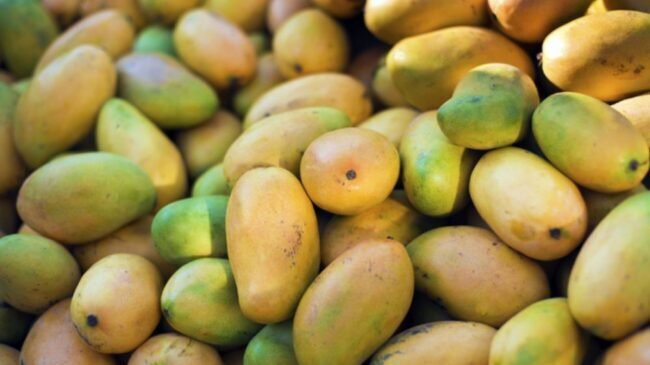You can identify artificially ripened mangoes at home by checking for uneven coloring, feeling for unnatural softness, smelling for chemical odors, examining the skin for residue, and tasting for bland or off-flavors.
Some signs you can identify the ripend mangoes:
- Color: Naturally ripened mangoes tend to have more uniform coloring, whereas artificially ripened ones may have uneven or patchy coloring.
- Texture: Gently press the mango with your fingers. A naturally ripened mango will yield slightly to pressure and feel firm but not hard. Artificially ripened mangoes might feel unnaturally soft or mushy in spots.
- Smell: A ripe mango should have a sweet, fruity aroma at the stem end. If the mango smells overly strong or chemical-like, it might be artificially ripened.
- Skin: Check for any signs of residue or chemical coatings on the skin. Artificially ripened mangoes may have traces of chemicals or waxy coatings used in the ripening process.
- Taste: The taste of a mango can also be a clue. Naturally ripened mangoes tend to have a more complex and balanced flavor, while artificially ripened ones might taste bland or have an off-flavor.
Remember, these methods aren’t foolproof, but they can help you make a more informed decision when selecting mangoes. If you’re unsure, it’s always best to buy from a trusted source.







